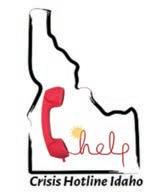WELLNESS CONNECTION N THE
H.P.C.W.R.V. RAINBOW’S END CHRISTOPHER’S STORY THE CRISISHOTLINE
Hospice and Palliative Care of the Wood River Valley

TMEN’S SECOND CHANCE LIVING JENNA’S STORY
he mission of Hospice and Palliative Care of the Wood River Valley (HPCWRV) is to provide excellence in serious-illness and end-of-life care and bereavement services, as well as support and education for patients, families, caregivers, and the community.

HPCWRV has chosen to remain a freestanding, volunteer intensive hospice to give patients, their families, and the medical community the greatest amount of flexibility and access to end-of-life care. HPCWRV is able to respond to our community needs, goals and priorities, and the people we serve. We are not limited by the restraints of being funded by Medicare. Our community has made a significant commitment to quality hospice and palliative care, bereavement services and caregiver support through its contributions to hospice.
R E C O V E R Y
Welcome to the premier issue of Wellness Connection, a collaboration of Rainbow’s End Recovery Center and the Crisis Hotline. Our goal is to provide timely information on mental health issues, such as addiction, depression, grief, and trauma. We hope to shed light on and encourage discussion of mental illness, addiction, and recovery. We will present stories of hope and encouragement as well as essays on related topics. This is just a start. We welcome your feedback and will be seeking submissions from our readers: wellness23@gmail.com
NAll of our services are completely funded by community donations. We do not receive any insurance or state money. It is a unique model of hospice that allows us to help individuals with longer prognoses as well as individuals who are still pursuing treatment measures. In addition to community financial support, we have a dedicated group of 91 volunteers and board members providing services; they have accumulated 1,327 hours this year.
Rainbow’s End Recovery set out to be different than the traditional substance use disorder treatment facility my friends and family had attended. A substance abuse counselor and an energy healer raved about the potential of the property in Challis on the Salmon River as the perfect place for people to heal. So it began.
Hospice and Palliative Care of the Wood River Valley provides care at an individual’s place of residence. There is always an RN on-call 24/7 for emergent needs for patients on our program. Last year our volunteers responded to 17 unexpected deaths and provided emotional and bereavement support to the surviving family members and logged 2,272 home visits.
The easy part was converting the bed-andbreakfast facility into client rooms. The hard part was the bureaucratic hoops. The hardest part was finding employees. When we opened our doors, we were
accrediting agencies. We saw more clients and were building a reputation for quality care.
Each client had a different story, used a different drug, but in the end, each was a person in
“The Hospice team was amazing and so greatly appreciated. My mother felt loved and respected. I was supported in every way.”
Where you used to be, there is a hole in the world, which I find myself walking around in the daytime and falling back into at night. I miss you like hell. ~ Edna St. Vincent Millay
All of our bereavement support is free and open to the public even if the loss was an individual who died outside of the Wood River Valley and/or was not receiving our services. Our volunteers and staff provided support to 463 individuals who were grieving a loss.
We have a lending library on a variety of topics: caregiving, grief, children and grief, death and dying. Just visit during office hours and we will help you select appropriate support or educational materials to meet your needs.
We offer various support groups:
• F.R.O.G.S.- a group for 6-12-year-old children who have lost a family member. This group meets once each month.
• Caregiver Support Group- for individuals who are caregiving for a family member. This group meets once/ month on the third Monday from 4-5:30 p.m. at our office in Ketchum. It also meets on the first Thursday of the month from 11-12:30 p.m. in Hailey at the Senior Connection.
• Spring and Fall Bereavement Groups that are open to adults that have experienced a loss. These groups require a RSVP and are 4 weeks each in length.
• Drop-in grief group for 10 weeks during the summer which is open to adults who have experienced a loss. This group meets weekly.
• Annual Memorial Tree Event- individuals can submit a name to be read at our Memorial Tree event for a $10/ name donation. The list of names gets read aloud and the lights on the tree are lit representing the names.
• Coping with the Holidays grief group that meets before Thanksgiving to collectively discuss creative ways to meet the onset of one of the busiest times of year as a bereaved individual.
• Over the years we have offered a variety of other types of grief groups based on need and interest within our
community: Art Therapy Grief Group and Yoga for Grief as well as a group dedicated to surviving spouses with young children.
• We can also meet with individuals one on one to discuss caregiving issues, completing advance directives, or bereavement.
In fiscal year 2021 HPCWRV had seven employees working with an average daily census of 56 patients and an annual total of 135 hospice patients. In addition, we provided 1.402 telephone and Telemedicine support to patients, 119 social worker visits, and facilitated 36 support group sessions.
If anyone is interested in knowing more about our grief groups and/or have questions, they should call our hospice office (208) 726-8464. You can also visit our website hpcwrv.org or email us hospice@hpcwrv.org.
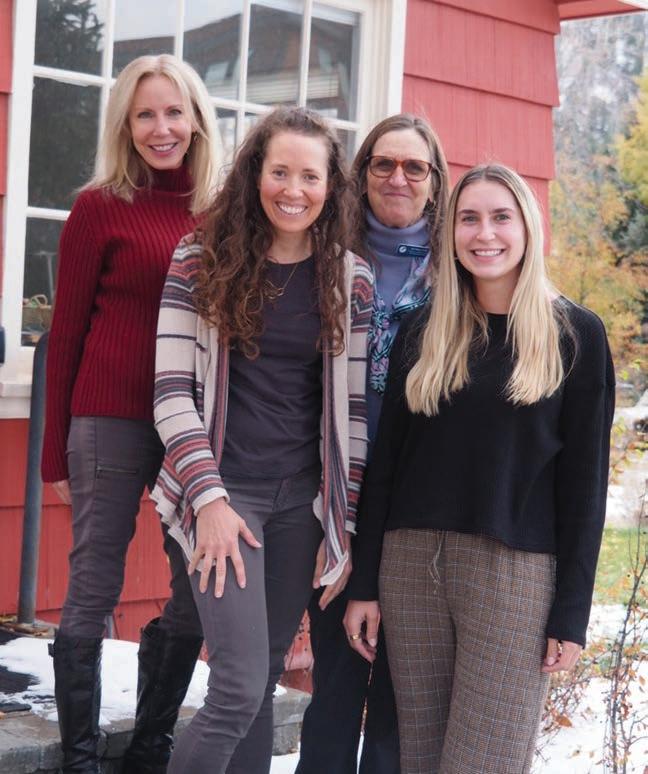
COMFORT IN WORDS
‘Tis the season for joyful celebrations, family gatherings, and religious rituals. Unfortunately, not everyone takes pleasure in these activities. They may be burdened by grief and loss or suffering from seasonal affective disorder (SAD).
SEASONAL AFFECTIVE DISORDER
From the National Institute of Mental Health (NIMH)
What causes SAD?
Many people go through short periods of time where they feel sad or not like their usual selves. Sometimes these mood changes begin and end when the seasons change. People may start to feel “down” when the days get shorter in the fall and winter (also called “winter blues”) and begin to feel better in the spring, with longer daylight hours.
In some cases, these mood changes are more serious and can affect how a person feels, thinks, and handles daily activities. If you have noticed significant changes in your mood and behavior whenever the seasons change, you may be suffering from seasonal affective disorder (SAD), a type of depression.
In most cases, SAD symptoms start in the late fall or early winter and go away during the spring and summer; this is known as winter-pattern SAD or winter depression. Some people may experience depressive episodes during the spring and summer months; this is called summer-pattern SAD or summer depression and is less common.
SAD is not considered a separate disorder but is a type of depression characterized by its recurrent seasonal pattern, with symptoms lasting about four to five months per year. Therefore, the signs and symptoms of SAD include those associated with major depression, and some specific symptoms that differ for winter-pattern and summer-pattern SAD. Not every person with SAD will experience all of the symptoms listed below.
Symptoms of major depression may include:
• Feeling depressed most of the day, nearly every day
• Losing interest in activities you once enjoyed
• Experiencing changes in appetite or weight
• Having problems with sleep
• Feeling sluggish or agitated
• Having low energy
• Feeling hopeless or worthless
• Having difficulty concentrating
• Having frequent thoughts of death or suicide
For winter-pattern SAD, additional specific symptoms may include:
• Oversleeping (hypersomnia)
• Overeating, particularly with a craving for carbohydrates
• Weight gain
• Social withdrawal (feeling like “hibernating”)
If you think you may be suffering from SAD, talk to your health care provider or a mental health specialist about your concerns. They may have you fill out specific questionnaires to determine if your symptoms meet the criteria for SAD.
To be diagnosed with SAD, a person must meet the following criteria:
• They must have symptoms of major depression, or the more specific symptoms listed above.
• The depressive episodes must occur during specific seasons (i.e., only during the winter months or the
summer months) for at least two consecutive years. However, not all people with SAD experience symptoms every year.
• The episodes must be much more frequent than other depressive episodes that the person may have had at other times of the year during their lifetime.
Millions of American adults may suffer from SAD, although many may not know they have the condition. SAD occurs much more often in women than in men, and it is more common in those living farther north, where there are shorter daylight hours in the winter. For example, people living in Alaska or New England may be more likely to develop SAD than people living in Florida. In most cases, SAD begins in young adulthood.
SAD is more common in people with major depressive disorder or bipolar disorder, especially bipolar II disorder, which is associated with recurrent depressive and hypomanic episodes. Additionally, people with SAD tend to have other mental disorders, such as attention deficit/hyperactivity disorder, an eating disorder, an anxiety disorder, or panic disorder.
SAD sometimes runs in families. SAD is more common in people who have relatives with other mental illnesses, such as major depression or schizophrenia.
Scientists do not fully understand what causes SAD. Research indicates that people with SAD may have reduced activity of the brain chemical (neurotransmitter) serotonin, which helps regulate mood. Research also suggests that sunlight controls the levels of molecules that help maintain normal serotonin levels, but in people with SAD, this regulation does not function properly, resulting in decreased serotonin levels in the winter.
Other findings suggest that people with SAD produce too much melatonin—a hormone that is central for maintaining the normal sleep-wake cycle. Overproduction of melatonin can increase sleepiness.
Both serotonin and melatonin help maintain the body’s daily rhythm that is tied to the seasonal night-day cycle. In people with SAD, the changes in serotonin and melatonin levels disrupt the normal daily rhythms. As a result, they can no longer adjust to the seasonal changes in day length, leading to sleep, mood, and behavior changes.
Deficits in vitamin D may exacerbate these problems because vitamin D is believed to promote serotonin activity. In addition to vitamin D consumed with diet, the body produces vitamin D when exposed to sunlight on the skin. With less daylight in the winter, people with SAD may have lower vitamin D levels, which may further hinder serotonin activity.
Negative thoughts and feelings about the winter and its associated limitations and stresses are common among people with SAD (as well as others). It is unclear whether these are “causes” or “effects” of the mood disorder, but they can be a useful focus of treatment.
Get Immediate Help
If you or someone you know is in immediate distress or is thinking about hurting themselves, call the National Suicide Prevention Lifeline toll-free at 1-800-273-TALK (8255) or the tollfree TTY number at 1-800-799-4TTY (4889). You also can text the Crisis Text Line (HELLO to 741741) or go to the National Suicide Prevention Lifeline website at suicidepreventionlifeline.org.
I should know enough about loss to realize that you never really stop missing someone. You just learn to live around the huge gaping hole of their absence.
~ Alyson Noel
What are the signs and symptoms of SAD?
I am left with since you’ve been gone.
Deadly spirits live in isolation and the paths that are chosen to escape, the bottle, the pills, the final action.
They will ask for your life, beware.
They start out friendly. Disguised. Please BEWARE.
Before you know it, you’ll be worshipping it, craving its comfort, hiding, lying, emotionally, physically, spiritually bankrupt, and full of shame.
One day, the lies turn against you.
Darkness closes in and you no longer hear the truth. The truth, you could have asked for help.
Someone would have answered, no judgment, no shame!
You do matter.
You are missed.
You brought a special light that the world needed.
Everyone has been left with heartache, questions, and what ifs.
Hopelessness, Helplessness, Worthlessness, Depression, Anxiety, Shame, Suicide, and Death- you are the LIE living in the path taken to escape.
The LIE patiently waits for its next victim to buy and swallow the lies.
Suicide, you have convinced too many people that you have all the answers to all of life’s problems.
“End it all, you say, the pain will all be over.”
The Truth: the pain is only over for the one who chooses to believe you.
Everyone else is left with the path of destruction that you left behind.
Trying to pick up the pieces.
For all who live with the memories of a loved one who listened to the lies, and you are trying to pick up the pieces, WE can find hope and healing.
WE can choose forgiveness and life.
WE can choose connection and bring hope to a hurting world around us.
Ipray that I never forget how I felt in the picture on the left. eighteen months ago, I was hopeless and felt just as worthless.
I prayed that I wouldn't have to wake up to live another day. My unresolved trauma throughout my life had become too much. I was at the height of my alcoholism, drinking a fifth a day and in so much emotional and spiritual pain.
I was given a choice and an opportunity eighteen months ago, and hoping it was a way out. I left for rehab at Rainbows End Recovery Center in Idaho. thirty four days later and the journey had only just begun. The last year and a half has been the hardest, most beautiful, most rewarding, and most peaceful of my life.
WE can choose truth over lies, love over hate, life over death.
TOGETHER, WE CAN RISE!
The reality is that you will grieve forever. You will not “get over” the loss of a loved one. You will heal and you will rebuild yourself around the loss you have suffered. You will be whole again, but you will never be the same. Nor should you be the same. Nor would you want to.
I have gained a love and an understanding for not only myself, but for those around me as well. I am blessed in my professional and personal life to help those still suffering today with their addiction. I have meaningful and honest connections with the people around me today. I am capable of handling even the worst situation with more love and more grace today. I am a work in progress, with the hope every day to be a better me than I was the day before. I have a beautiful and ever growing and changing relationship with a higher power of my own design and I have more blessings and more hope than I could have ever dreamed, even on my best day 18 months ago.
~ Elisabeth Kubler-RossMISSION STATEMENT


The Wellness Connection was developed to provide timely information on mental health issues, such as addiction, depression, grief and trauma, and showcase the community nonprofit services. We will highlight the services of a different nonprofit organization each month to give the community a better understanding of the broad scope of services offered. We will present stories of hope and encouragement as well as essays on related topics. We welcome your feedback. Contact us at RERCjournal@gmail.com
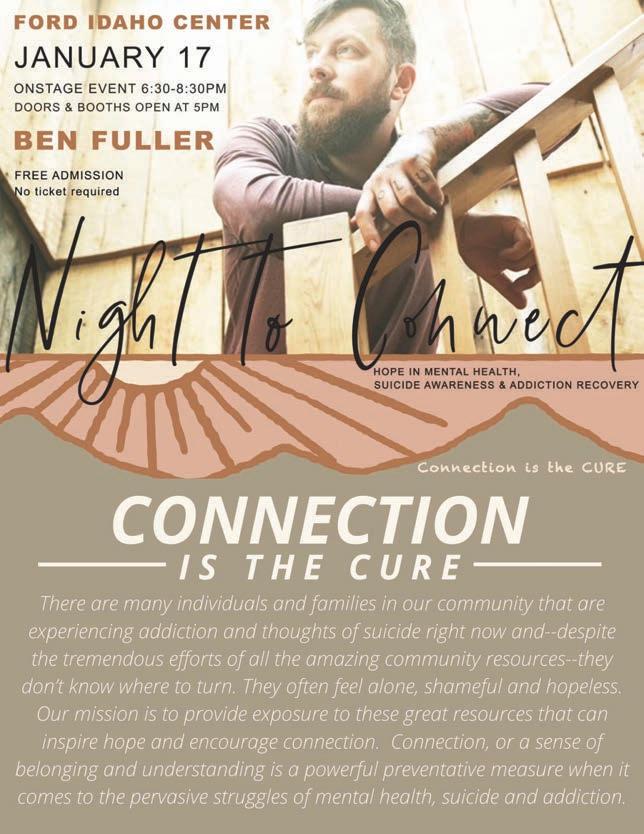
I wish I could give even just a glimpse of the hope and love I have discovered on this journey. I continue to do the next right thing, let go of things I cannot control, and exist for just one day at a time. Thankful every day for the opportunity to have lived this life.
Jenna H.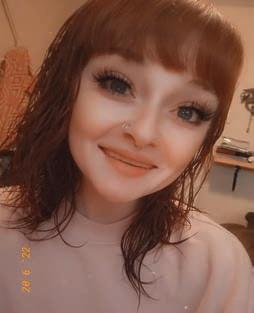
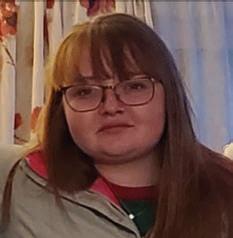
Resources
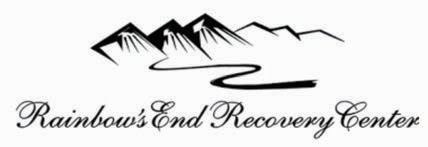
of Domestic Abuse www.theadvocates.org | 208 788-4191
St. Lukes Mental Health Services www.stlukesonline.org 208 788-2134
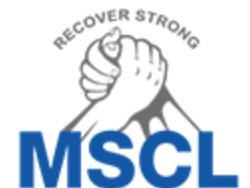
The Suicide Hotline | DIAL 988
